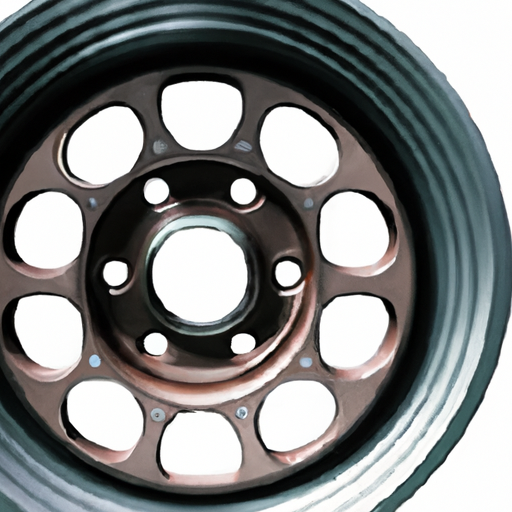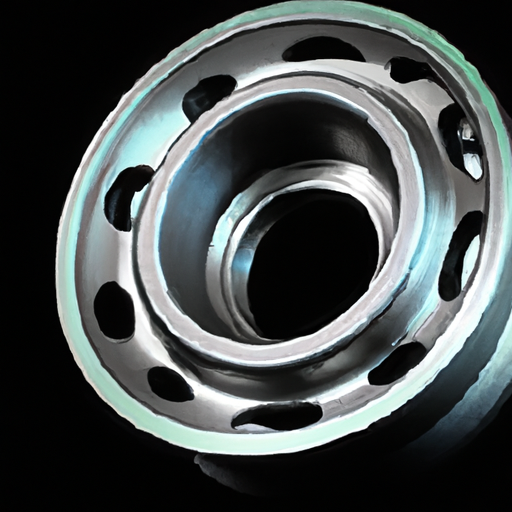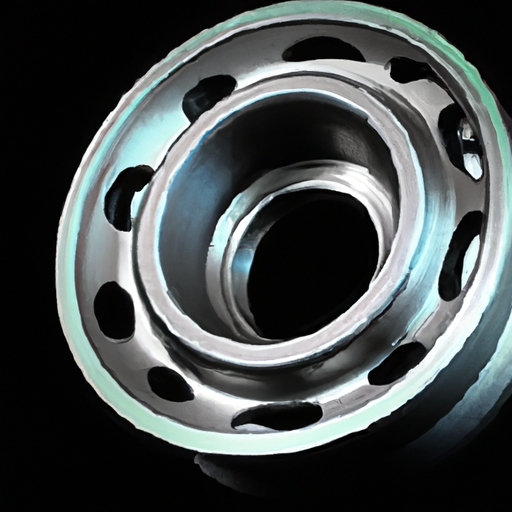Have you ever wondered what wheel spacers are and when they should be used? Wheel spacers are components that fit between the hub and the wheel, effectively pushing the wheel outward. This simple, yet significant modification can have several benefits, including improved handling, enhanced appearance, and the ability to accommodate larger brakes or offset wheels. To learn more about the advantages and instances when wheel spacers should be used, read on!

What are wheel spacers
Definition of wheel spacers
Wheel spacers are essentially metal spacers that are mounted between the wheel hub and the wheel. They create extra space or “offset” between the wheel and the hub, pushing the wheel outwards. Wheel spacers come in various thicknesses and are available in different materials such as aluminum or steel.
Purpose of wheel spacers
The main purpose of wheel spacers is to create more clearance between the wheel and the wheel hub. This additional space is beneficial in several ways. It can help achieve the desired wheel fitment, improve vehicle performance and handling, correct wheel offset, clear suspension or brake components, and enhance the vehicle’s appearance. Wheel spacers can also offer options for adding or reducing track width, allowing for increased stability and customization.
Types of wheel spacers
Bolt-on wheel spacers
Bolt-on wheel spacers are the most common type and are easily installed. They have bolt holes that match the vehicle’s wheel studs, allowing them to be securely bolted onto the hub. Bolt-on wheel spacers typically require removing the wheel to install them properly.
Slip-on wheel spacers
Slip-on wheel spacers, also known as slip-over or slide-on spacers, are designed to fit over the existing wheel studs. They do not require removing the wheel for installation, making them a more convenient option. Slip-on wheel spacers are secured in place by the lug nuts when the wheel is put back on.
Hub-centric wheel spacers
Hub-centric wheel spacers are designed to provide a precise fit by centering the wheel on the hub. They have a lip on the inner side that fits snugly onto the hub’s center bore. This ensures proper alignment and minimizes the stress on the wheel studs. Hub-centric wheel spacers are preferred for their improved balance and reduced vibration.
Hub-centric vs. lug-centric
The main difference between hub-centric and lug-centric wheel spacers is the way they center the wheel. Hub-centric spacers center the wheel using the hub’s center bore, while lug-centric spacers rely on the lug nuts for centering. Hub-centric spacers are generally considered to be more reliable and offer better balance and stability.
Benefits of using wheel spacers
Wider stance and improved stability
Wheel spacers help create a wider stance by pushing the wheels further out from the vehicle’s body. This can improve stability, especially during cornering or high-speed maneuvers. The increased track width can enhance overall handling and reduce the risk of rollovers, making wheel spacers popular among car enthusiasts and performance-oriented drivers.
Enhanced vehicle appearance
Installing wheel spacers can give your vehicle a more aggressive and custom look. By pushing the wheels outwards, wheel spacers create a wider profile, filling the wheel wells and giving the vehicle a more muscular stance. This visual enhancement can make a significant difference in the overall aesthetics and appeal of your vehicle.
Fitment of larger brakes or wheels
In some cases, the original wheel offset may not allow for the installation of larger brake calipers or wheels. Wheel spacers can provide the necessary clearance by pushing the wheels away from the suspension components. This allows for the fitment of larger brake systems or aftermarket wheels, giving you more options for customization.
Clearance for suspension or brake components
If you have upgraded your suspension or brake system, wheel spacers can help provide the necessary clearance for these components. By creating extra space between the wheel and the suspension or brake parts, wheel spacers ensure that there is no interference, allowing for smooth and unobstructed operation.
Offset correction
Sometimes, the wheel offset from the factory may not be suitable for your specific vehicle or desired look. Wheel spacers can be used to correct the offset by pushing the wheels further out or inwards. This adjustment can ensure that the wheels align properly within the wheel wells, improving the overall balance and handling of the vehicle.
Improved handling
By widening the track width, wheel spacers can improve the vehicle’s handling characteristics. The increased stability can enhance cornering grip, reduce body roll, and provide better traction. This can be especially beneficial for those who enjoy spirited driving or participate in track events, as it can significantly enhance the overall driving experience.
Options for adding or reducing track width
Wheel spacers offer versatility in adjusting the track width of your vehicle. Whether you want to achieve a wider stance or a narrower profile, wheel spacers provide the flexibility to customize the track width according to your preference. This ability to fine-tune the track width can have a direct impact on your vehicle’s performance and aesthetics.
Potential drawbacks of using wheel spacers
Potential increase in stress on wheel bearings
Installing wheel spacers can potentially increase the stress on the wheel bearings. By moving the wheel further away from the hub, the leverage applied to the bearings can be greater. This increased stress can accelerate wear and lead to premature failure of the wheel bearings. It is important to ensure that the wheel spacers are installed correctly and that proper maintenance is carried out to minimize this risk.
Issues with wheel alignment
Using wheel spacers can pose challenges when it comes to wheel alignment. The altered position of the wheels can affect the alignment angles, such as camber, toe, and caster. It is crucial to have a professional alignment performed after installing wheel spacers to ensure that the wheels are properly aligned. Failure to do so may result in uneven tire wear, reduced handling performance, and potential safety issues.
Wheel torque distribution
Wheel spacers can also impact the distribution of torque applied to the wheel studs and lug nuts. The increased leverage can place additional stress on these components, potentially leading to failures. It is important to ensure proper torqueing of the lug nuts and regular inspection to identify any signs of wear or damage.
Potential wheel stud or lug nut failures
Improper installation or improper torqueing of the lug nuts can lead to wheel stud or lug nut failures. This can result in a wheel detaching from the vehicle while in motion, posing a serious safety hazard. It is crucial to follow the manufacturer’s instructions and torque specifications when installing wheel spacers to avoid such failures. Regular inspection of the wheel studs and lug nuts is also highly recommended to ensure their integrity.

When to use wheel spacers
Achieving desired wheel fitment
If you are aiming for a specific look or fitment for your vehicle, wheel spacers can help you achieve the desired result. Whether you want a wider stance, a flush fitment, or improved clearance for larger wheels, wheel spacers offer a practical solution to customize your vehicle’s appearance.
Enhancing vehicle performance
For those seeking improved performance and handling, wheel spacers can make a noticeable difference. The wider track width can enhance stability, reduce body roll, and provide better traction, especially during spirited driving or track events. Wheel spacers can help optimize the handling characteristics of your vehicle to suit your driving style.
Correcting wheel offset
If your vehicle’s factory wheel offset does not align with your desired look or fitment, wheel spacers can correct this imbalance. By pushing the wheels further out or inwards, you can achieve the desired offset to ensure proper wheel alignment and aesthetics.
Clearing suspension or brake components
Upgrading your suspension or brake system may require extra clearance for proper operation. Wheel spacers can provide the necessary space between the wheels and these components, allowing for unobstructed movement and avoiding any interference.
Improving handling and stability
The wider track width created by wheel spacers can improve the overall handling and stability of your vehicle. This can be particularly beneficial for those who enjoy sporty driving or want to enhance the driving experience. The increased stability and grip can provide more confidence behind the wheel, especially during spirited maneuvers.
Aesthetics and customization
Wheel spacers can be used purely for aesthetic purposes, allowing you to achieve a more aggressive and customized look for your vehicle. The widened stance and flush fitment can transform the appearance of your vehicle, giving it a unique and eye-catching style.
Considerations before using wheel spacers
Adhering to local laws and regulations
Before installing wheel spacers, it is crucial to research and understand the local laws and regulations regarding their usage. Some jurisdictions may have restrictions on the use of wheel spacers or specific requirements for their installation. It is important to ensure compliance with these regulations to avoid potential legal issues.
Compatibility with vehicle and wheel specifications
Not all vehicles and wheels are compatible with wheel spacers. It is essential to check the compatibility of your vehicle and wheels with wheel spacers before making a purchase. Factors such as bolt pattern, hub diameter, and stud size should be considered to ensure a proper fit.
Selecting appropriate spacer thickness
Choosing the correct spacer thickness is crucial for proper fitment and performance. Too thin or too thick spacers can lead to various issues such as wheel balance problems, interference with suspension components, or improper wheel alignment. Consult with a knowledgeable professional or refer to the manufacturer’s guidelines to determine the appropriate spacer thickness for your specific vehicle and wheels.
Quality and material of spacers
The quality and material of the wheel spacers play a significant role in their performance and longevity. It is important to choose high-quality spacers made from durable and reliable materials. Aluminum spacers are commonly used due to their lightweight and corrosion-resistant properties, but steel spacers may be suitable for heavy-duty applications. Consulting with reputable manufacturers or experts can help ensure the selection of high-quality wheel spacers.
Installation and maintenance
Proper installation of wheel spacers is crucial to ensure their effectiveness and safety. It is recommended to have them installed by a qualified professional who has experience with wheel spacers. Additionally, regular maintenance is essential to verify the tightness of lug nuts, inspect for signs of wear or damage, and address any potential issues promptly. Following the manufacturer’s instructions and recommended maintenance guidelines will help ensure the optimal performance and longevity of the wheel spacers.

Steps to install wheel spacers correctly
Gathering necessary tools and materials
Before starting the installation process, gather all the necessary tools and materials. This may include a torque wrench, socket set, jack and jack stands, thread locker, and the appropriate sized wheel spacers for your vehicle.
Ensuring vehicle and wheel compatibility
Confirm the compatibility of the wheel spacers with your vehicle and wheels. Check the bolt pattern, hub diameter, and stud size to ensure a proper fit. Improperly sized wheel spacers can lead to safety hazards and damage to your vehicle’s components.
Measuring bolt pattern and hub diameter
Measure the bolt pattern and hub diameter of your vehicle to ensure you select wheel spacers that match these specifications. The bolt pattern is the number of lug holes in the wheel, typically measured in millimeters, and the hub diameter is the size of the opening in the center of the wheel that fits onto the hub.
Selecting appropriate spacer thickness
Based on your desired fitment and clearance requirements, select the appropriate thickness of wheel spacers. Consult with a professional or refer to the manufacturer’s guidelines to determine the proper spacer thickness for your specific vehicle and wheels.
Cleaning and preparing the mounting surfaces
Thoroughly clean the mounting surfaces of the wheel hub and the back of the wheel spacer. Remove any dirt, debris, or rust to ensure a clean and secure connection. Applying a thin layer of thread locker to the wheel studs can help prevent them from loosening over time.
Installing the wheel spacers
Carefully align the wheel spacers with the wheel studs and slide them onto the hub. Ensure that they are centered and fully seated before proceeding. With the wheel spacer in place, reinstall the wheel using the appropriate lug nuts. Tighten the lug nuts by hand initially, and then torque them to the manufacturer’s recommended specifications in a star or cross pattern using a torque wrench.
Torqueing the lug nuts
Using a torque wrench, evenly tighten the lug nuts in a star or cross pattern to the manufacturer’s recommended torque specifications. This will help ensure that the wheel spacers are properly secured to the hub and prevent the risk of over- or under-tightening.
Retorquing after a specified distance
After driving for a specified distance, typically around 50-100 miles, it is important to retorque the lug nuts. This helps compensate for any settlement or initial loosening that may occur during the break-in period. Refer to the manufacturer’s guidelines for the recommended retorqueing procedure.
Maintenance and inspection of wheel spacers
Regular cleaning and corrosion prevention
To maintain the performance and longevity of wheel spacers, it is important to regularly clean them and prevent corrosion. Clean the wheel spacers using a mild soap or wheel cleaner and a soft brush. Rinse them thoroughly and dry them before reinstalling. Applying a protective coating, such as a clear spray-on sealant or anti-corrosion lubricant, can help prevent rust and corrosion.
Checking for signs of damage or wear
Periodically inspect the wheel spacers for any signs of damage or wear. Look for cracks, bends, or excessive wear on the spacers. Check the lug nuts for proper tightness and inspect the wheel studs for any signs of damage. If any issues are identified, it is crucial to address them promptly to avoid safety hazards.
Verifying torque on lug nuts periodically
As part of regular maintenance, verify the torque on the lug nuts periodically. Over time, lug nuts may loosen due to vibrations or settling. It is recommended to check the torque on the lug nuts after every few thousand miles or as specified by the manufacturer. Use a torque wrench to ensure that the lug nuts are tightened to the appropriate specifications.
Reinstallation after tire or wheel servicing
If you need to remove the wheels or perform any tire or wheel servicing, it is important to reinstall the wheel spacers correctly. Follow the same installation steps as before, ensuring that the mounting surfaces are clean and that the lug nuts are torqued to the manufacturer’s specifications. Failure to reinstall the wheel spacers properly can compromise the safety and performance of your vehicle.
Consulting a professional for inspections
If you are unsure about the condition of your wheel spacers or suspect any issues, it is advisable to consult a professional. A reputable mechanic or tire professional can conduct a thorough inspection, ensure proper installation and maintenance, and provide expert advice and assistance.

Replacing wheel studs or lug nuts
Symptoms of damaged or worn components
There are several signs that may indicate the need to replace wheel studs or lug nuts. These can include stripped or damaged threads, difficulty in tightening or loosening the lug nuts, vibrations while driving, or visible wear or damage to the studs or nuts. If any of these symptoms are present, it is crucial to address the issue promptly to prevent further damage and ensure the safety of your vehicle.
Tools and steps for replacing studs or nuts
Replacing wheel studs or lug nuts requires specific tools and steps. You will need a lug nut wrench, lug stud replacement kit, torque wrench, and possibly a hammer and punch. The process involves removing the wheel, removing the damaged stud or nut, installing the replacement component, and torquing it to the manufacturer’s specifications. It is important to follow the proper procedures and consult a professional if you are not familiar with the process.
Importance of proper torqueing
Proper torqueing of the wheel studs or lug nuts is crucial to ensure their effectiveness and prevent failures. Under-tightening can lead to loosening and potentially causing the wheel to detach, while over-tightening can damage the threads or studs. It is important to use a torque wrench and torque the components to the manufacturer’s recommended specifications to ensure proper installation and safety.
Considering professional assistance
If you are unsure about the process or lack the necessary tools, it is recommended to seek professional assistance. A reputable mechanic or tire professional can replace the wheel studs or lug nuts efficiently and ensure that they are properly torqued. This can provide peace of mind and help prevent any safety issues related to the replacement process.
Professional advice and assistance
Consulting a reputable mechanic or tire professional
If you have any doubts or questions regarding the usage, installation, or maintenance of wheel spacers, it is advisable to consult a reputable mechanic or tire professional. They can provide expert advice, answer your questions, and guide you in making informed decisions regarding wheel spacers.
Getting expert opinion on wheel fitment
If you are unsure about the appropriate wheel fitment for your vehicle or have specific requirements, seeking expert opinion can be beneficial. A professional can assess your vehicle’s specifications, recommend suitable wheel spacers, and guide you in achieving the desired fitment while ensuring proper clearance and safety.
Seeking assistance for installation or inspection
If you are not familiar with the installation process or want to ensure the correct installation of wheel spacers, seeking assistance from a professional is recommended. They can perform the installation according to the manufacturer’s guidelines, ensuring that the wheel spacers are properly aligned, torqued, and secure. Similarly, if you have any concerns or want to verify the condition of your wheel spacers, a professional inspection can provide you with peace of mind and address any potential issues.
In conclusion, wheel spacers can be a useful aftermarket accessory for improving vehicle performance, achieving desired aesthetics, and correcting wheel fitment issues. They provide additional clearance, enhanced stability, and increased customization options. However, it is important to consider the potential drawbacks and keep in mind various factors such as local laws, compatibility, proper installation, and regular maintenance. By following the recommended guidelines and seeking professional advice when necessary, you can safely and effectively utilize wheel spacers to enhance your driving experience.


